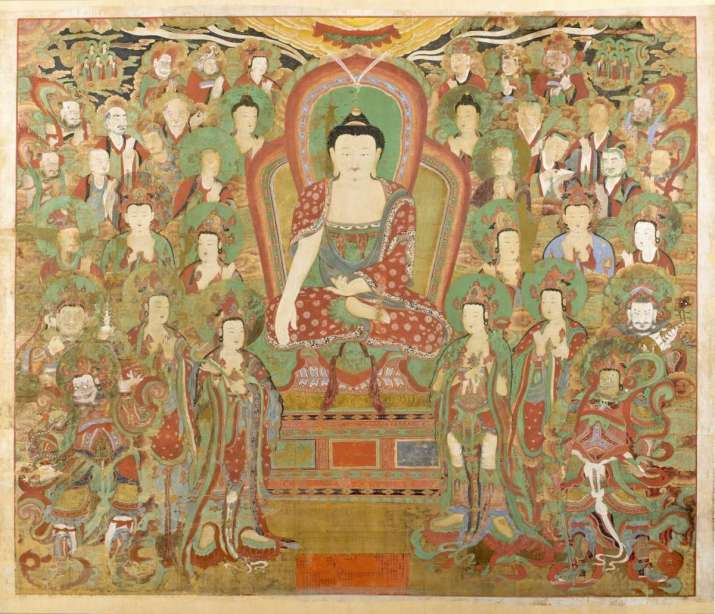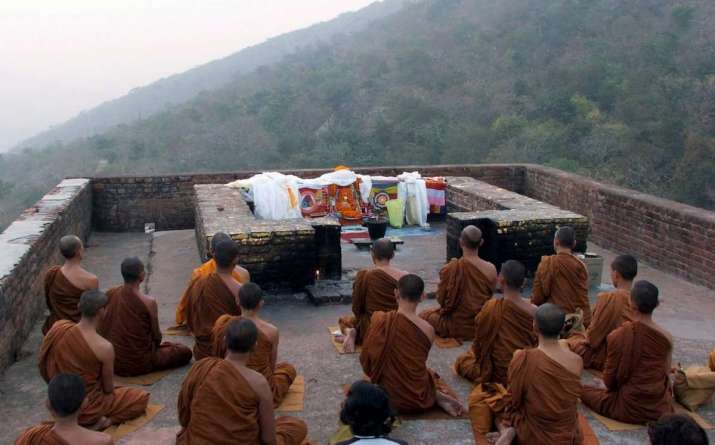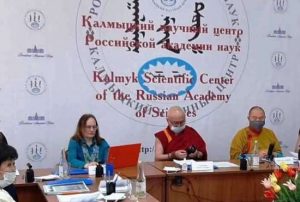
I have my favorites when it comes to Buddhist writing (who doesn’t?)—there are texts that speak to me and others that don’t. Some sources are clear and straightforward, while others are . . . well, not so straightforward. Some Buddhist texts are so convoluted and flamboyant, it’s like rummaging through a crowded attic looking for hidden treasure.
One of the most difficult texts for me has been the Lotus Sutra. That one just baffles. I have tried, but it has never yielded meaningful results; I even took a course on the Lotus Sutra in graduate school, spending an entire semester going over it line by line, chapter by chapter. But it did little to help. By the end of the semester, I was just as muddled as before, circling around the same questions with which I had started the course. Why did the Lotus Sutra have to exaggerate so much? Why did it have to make so many lists? And what audacity to keep pointing to itself as the highest authority! I closed the text and walked away, shaking my head. It took nearly 20 years before I was ready to try again.
One day, while scrolling through Netflix, I stumbled upon a series called Cosmos: A Spacetime Odyssey. I watched the opening episode with my jaw hanging open. Neil deGrasse Tyson, the astrophysicist who narrates the show, presents our Cosmic Address in that opening episode. I was theoretically familiar with the material, but somehow his presentation made it all very new to me. Like an address on an envelope, he begins with our smallest identifier and moves outward. First line: planet Earth (obviously). Next line: the solar system. After that: the Milky Way. Then the galaxy, which is just one of billions of galaxies in our universe. Which is . . . and this is my favorite part: just one universe amid (potentially) billions of universes.
The show pulls the (virtual) image further and further away from our little Earth, so that you find yourself watching the growing immensity of space (and the simultaneous disappearance of Earth). The vastness is overwhelming. Which means that our irrelevance is profound. No one on Earth—not now, before, or in the future—is (or can be) of any significance. In the grand scheme of things, our planet—our entire planet—is less than a speck of dust.
In the opening chapter of the Lotus Sutra, the Buddha is sitting on Vulture Peak, surrounded by a “Great Assembly.” According to the text’s narrator, this means that the Buddha is surrounded by no less than 1,200 arahants, including great disciples such as Sariputra, Maugalyana, Mahakasyapa, and Rahula. There are also 2,000 other disciples who are still in training, with Ananda the most famous among them. There are 6,000 nuns (Yasodhara and Pajapati are named here), 80,000 bodhisattvas, 16 virtuous men, 20,000 gods (each followed by 30,000 gods), eight Naga kings (followed by hundreds of thousands of their followers), four kinnaras (followed by hundreds of thousands of their own followers), four divine Gandharvas (again with hundreds of thousands of followers), four demon beings (plus hundreds of thousands of followers), and four Garudas (yet another few hundred thousand followers here too).
All of these beings gather on Vulture Peak to hear the Buddha teach. This is what the Lotus Sutra means when it speaks of a “Great Assembly.”
But here is my ongoing difficulty with the text: I have been to Vulture Peak. It is in Bihar, northern India. The mountain is quite small—easily climbed in less than an hour (there is even a chairlift that will do the work for you if you want)—and the top, where all of these sutras are apparently set, consists of a small rock platform. I don’t imagine that more than a dozen people could sit there at once. It’s a very small space (appropriate for the top of a mountain). Not the kind of space that can accommodate 1,200 arahants, 8,000 disciples, 80,000 bodhisattvas, and millions of magical beings.
Now, I realize how literal I am being, but the Lotus Sutra plays this game at every stage, with scene after scene elaborated upon with absurd exaggeration. Even if we confined all the bodhisattvas and magical beings to the sky, Vulture Peak still couldn’t accommodate a fraction of the listed human disciples. Why does the Lotus Sutra have to be so flamboyant? Why does it have to one-up every story to the point of absurdity? I cannot get past the first paragraph of the text without shaking my head.
But Neil deGrasse Tyson’s description of our Cosmic Address taught me something. It provided a way of seeing the wisdom of the Lotus Sutra that had been lost on me until then. When I watched that opening episode of Cosmos, I realized what the Lotus Sutra might have been trying to convey. I obviously recognize the limitations of my literal engagement with the text, yet I couldn’t seem to shake it. But as I watched that episode pull itself away from the tiny speck that is our world, and then our galaxy, and then our universe, I realized how important it was to recognize the limits of my own imagination. My small little world is nothing in the most profound sense of the term, and I will likely never have the tools to appreciate that fact in all its depth.
What is awakening but an attempt to wrestle with nothingness and immensity at the same time? Buddhist texts attempt to convey the immeasurable experience that is awakening, the immensity of the inner universe, but it is so difficult to express. Metaphors abound, but direct access to inner immensity? Impossible.

As I watched that episode, I realized that the Lotus Sutra was trying to lead me to inner immensity. The text generates a Great Assembly that blows the mind with its expansiveness (all of which is set on a platform no bigger than the average Manhattan apartment). It is trying to tell us that there is something wonderfully cosmic about the inner world. Something that goes beyond time, space, or even reason. Awakening will blow our minds with its immensity, defying all reasonable possibility. It will seem absurd, because under normal circumstances it is. The opening paragraph of the Lotus Sutra is not trying to be reasonable, nor is it likely trying to be literal. It is pointing to something beyond my own capacity for understanding and inviting me to try to see it; to see something so big that I become small in the process. Like watching Earth fade into nothingness as the virtual camera pulls away.
I have to recognize my own smallness to understand limitlessness. That’s what I see now when I read about the Great Assembly in the opening paragraph of the Lotus Sutra. I wonder what will happen when I move on to the next one . . .














this is beautiful, thank you for sharing this experience. when we start seeing the continuum, between the sutras and everyday wordly experiences, like watching telly, wisdom is definitely maturing, we start experiencing the integration of the universal path which is everywhere. Dharma serves as a compass, so that we may not get lost